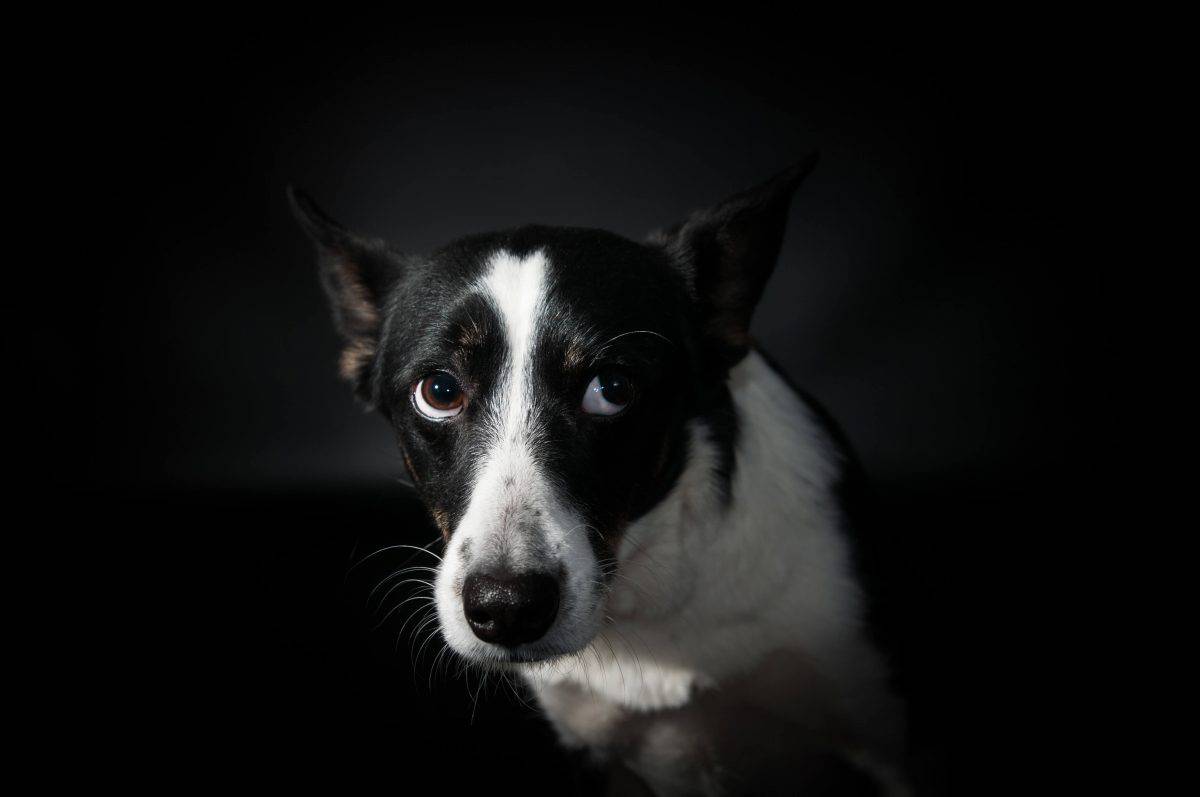The Myth of Reinforcing Fear

The Myth of Reinforcing Fear
There is a school of thought in the training world that says you shouldn’t comfort or give treats to a frightened dog because you are reinforcing fear. For example, if your dog is frightened while getting groomed, you should not stroke them or distract them with treats because this could increase their experience of fear.
The Truth About Reinforcing Fear
In order to understand what’s actually happening, it’s necessary to first ensure we’re all using the same definitions and language.
First, the definition. A stimulus is ‘reinforcing’ when it makes the behavior more likely to occur again. Note – this definition indicates that we are talking about behaviors. And there lies the crux of the problem with this myth. The myth suggests that we can increase the likelihood of an emotion, which we cannot do.
What Is Really Happening
There are many behaviors that have been associated with fear. These include lip licking, averting their gaze, cowering and efforts to escape. Some dogs display their fear by showing more defensive behaviors such as showing teeth, growling, barking, lunging and even biting.
If your dog is showing such behaviors in a particular situation (e.g. the grooming salon) and you offer her some cheese, one of two things will happen. Either you will momentarily distract your dog from their fear, which provides a moment of relief, or the dog will be so afraid she cannot eat. If your dog can eat and is distracted from her fear, even for just a moment, then for that moment you reduced her experience of fear. With repeated pairings of the scary situation with the tasty treat, and thus the repeated distractions from the experience of fear, you will find that your dog’s overall fear in that situation reduces. The fear may even go away altogether!
And it doesn’t have to be food (though that is often the fastest way to help a dog over her fear). Being calm, using sweet (baby) talk, playing games and just quiet reassurance can all help your dog feel less afraid. I’ve written recently about my dog’s fear of thunder. I play a game with my dogs when the thunder monster shows up. When the light flashes, I smile and quietly say “the noises are coming….” I make direct, playful eye contact with my dogs. Then when the thunder rumbles, I cheerfully say “Yay! Boomies!!!!! And I toss some kibble or pet the dogs vigorously in the same way I do when I’m playing with them.
My fearful boy remains relaxed and wiggly. He no longer pants, paces or tries to escape. He no longer trembles like he used to. So, by the definition above – a stimulus that makes the behavior more likely – did my interaction increase or decrease the likelihood of the behaviors associated with fear? Well, those behaviors have diminished tremendously. Why? Because I reduced the experience of fear through happy interactions, sweet talk, food and play.
It Is Possible To Make Fear Worse
Now it is important to note that you can make fear worse. If your dog is afraid and you act afraid – if you are frantic or panicking – your dog will feed off your behavior. If your dog is afraid and you do something that is startling or scary, you will very likely increase the dog’s fear. For example, if during that thunderstorm, I accidentally drop a pot on the kitchen floor, adding another loud and unexpected noise, my dog will surely continue to be fearful. But because fear is an emotion, we would not say this reinforces the fear. Rather we would say we are exacerbating the experience of fear by adding more fear.
TL;DR
Using food, affection, distraction, play and sweet talk with a fearful dog will NOT make their fear worse. At worst, it will not impact the dog’s experience of fear. At best, you will distract your dog from their fear, and with enough repetitions, you will help your dog feel less fearful overall of that scary stimulus. So, comfort your dog when they seek reassurance. Tell them they’re OK and that you’ll keep them safe. Offer them bites of their favorite foods. Play a game with them and help them feel safe.
If you’re unsure of the best way to comfort your dog, seek the advice of a force free, positive reinforcement trainer. Happy training!
Author - Jody Epstein
Jody Epstein is a certified behavior consultant, certified professional dog trainer, and holds a master’s degree in animal behavior from Tufts University. She has been training professionally for more than 12 years and is pleased to be part of the Academy of Pet Careers team, teaching the next generation of trainers. Look out for her blogs on all things dog training and animal behavior.

